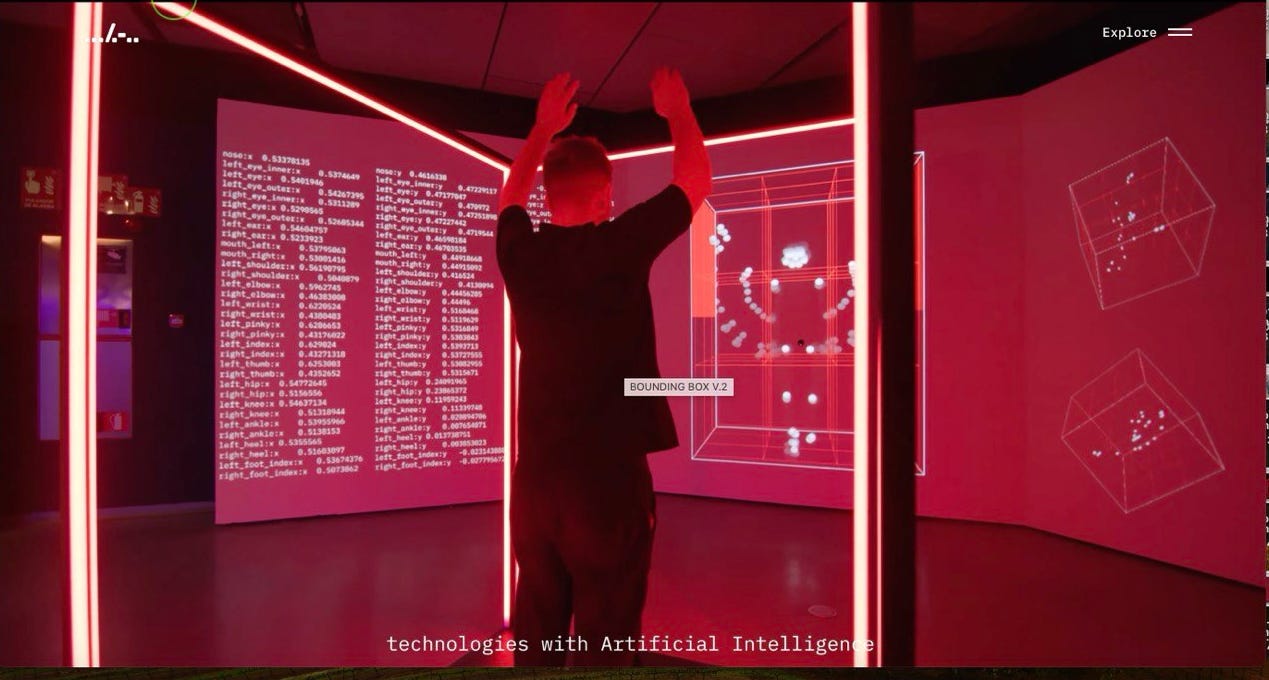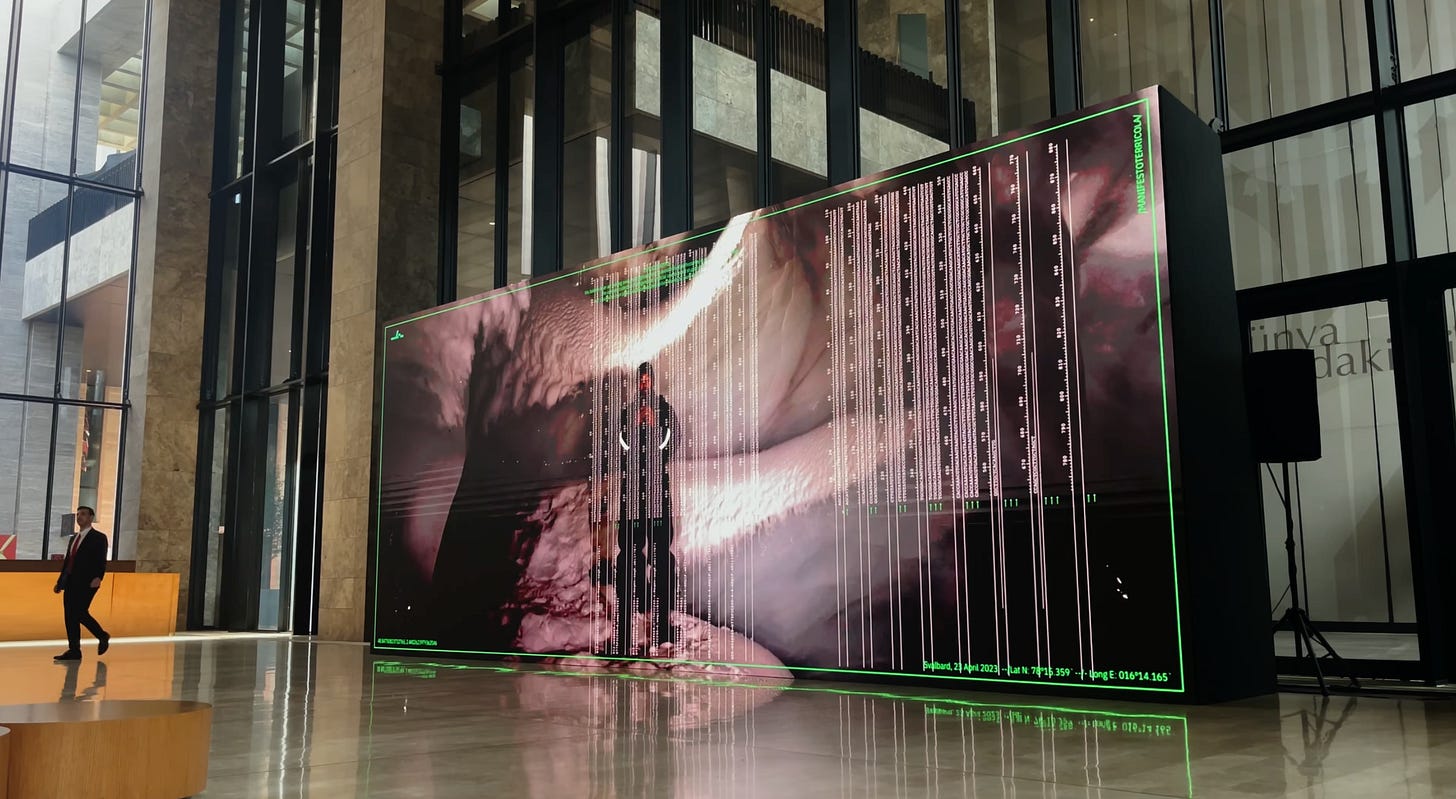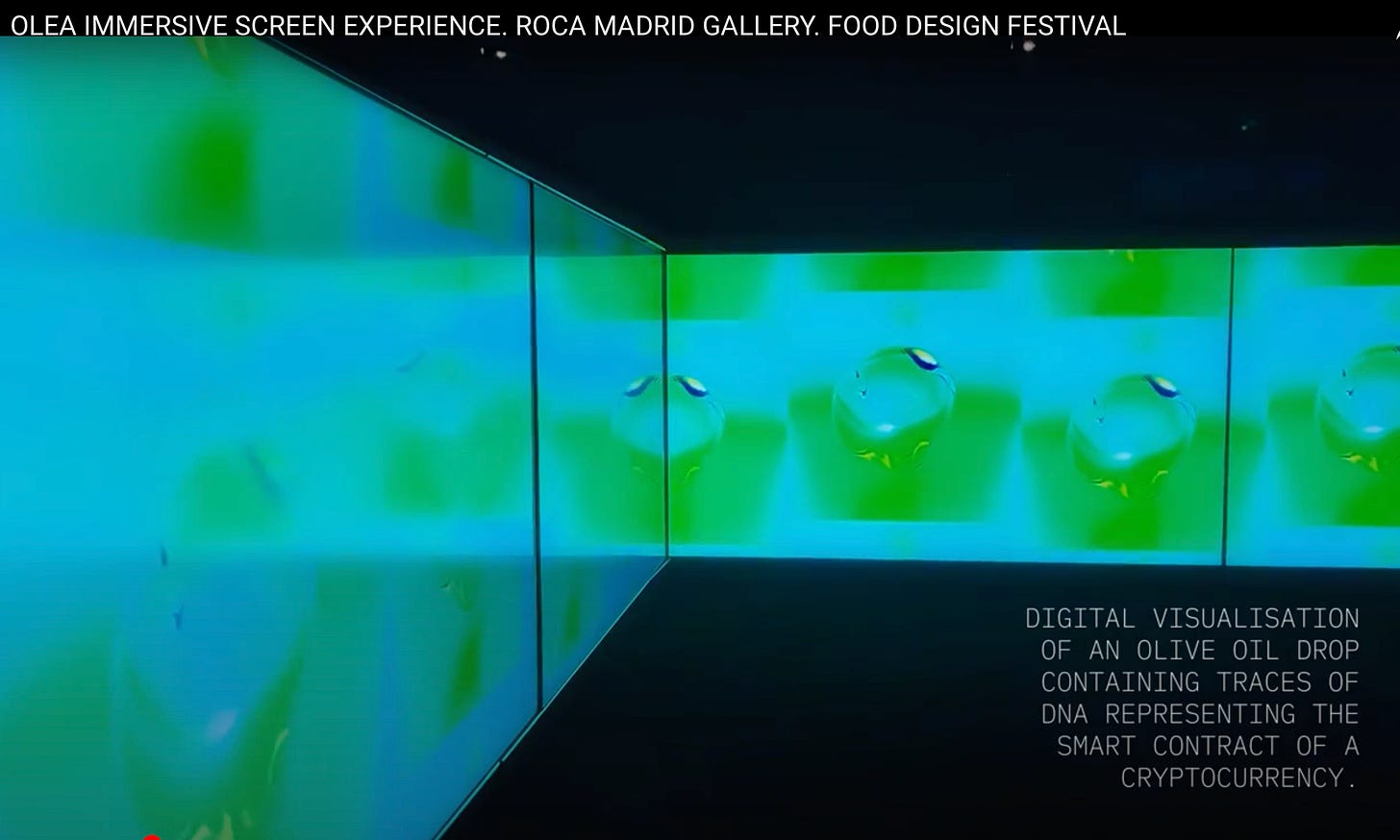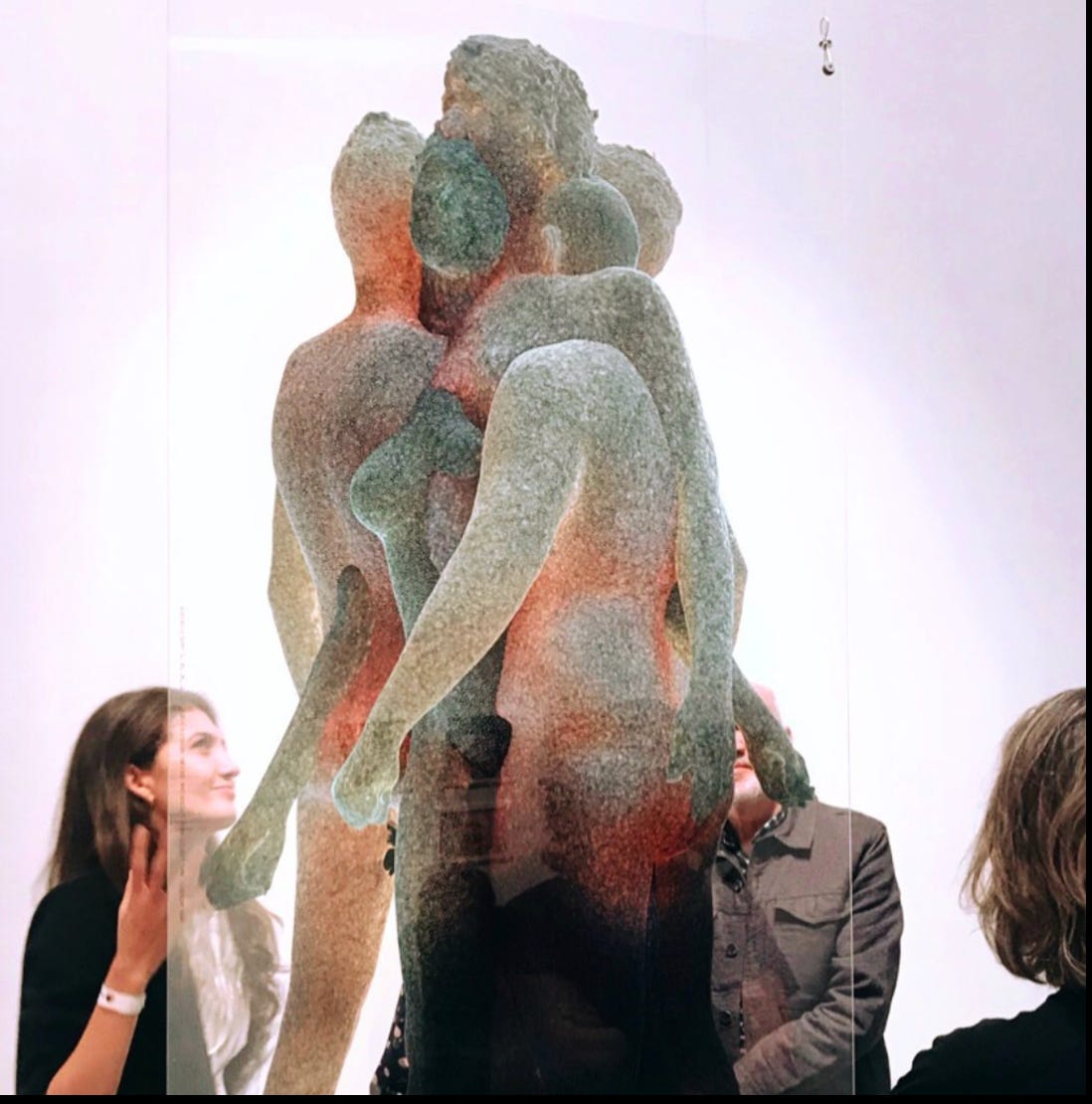The Blockchain Technologies Applied To The Art World, Including NFTs, Seem Like A Logical Step In The Evolution Of Digital Art And Its Particular Economy
Spanish media conceptual artist and researcher Solimán López explores the future of modern society through the language of science and art.
by Aida Dzhanhirova
The BOUNDING BOX project
“The Blockchain Technologies Applied To The Art World, Including NFTs, Seem Like A Logical Step In The Evolution Of Digital Art And Its Particular Economy”, Solimán López
Solimán López – a new media conceptual artist, driven by a passion for experimentation and the joy of exploration. For over 10 years, he has been experimenting with new technologies, exploring relevant topics such as natural resources, the balance between digital and physical, the expansion of human capabilities, and more. The geography of his projects is extensive, and it’s easier to name the places he hasn’t yet visited. CULTURAL SINGULARITY had to travel a long way to catch Solimán López in Peru, where he is preparing his participation in the exhibition MUNDO EXPANTIDO in collaboration with FUNDACIÓN TELEFONICA in the MUSEO DE ARTE DE LIMA. An interactive installation (BOUNDING BOX) explores the limits of the human body in artificial intelligence and digital culture. We hope that in the interview with Solimán López, we have confirmed the well-known opinion that an artist perceives the essence of cultural and technological breakthroughs decades before their transformative influence becomes evident. He builds models, or Noah's Arks, to meet the forthcoming change.
The HARDDISKMUSEUM presentation
CS: In your work, you touch on complex philosophical themes of love, the material and immaterial, consciousness, relationships, etc. This requires immense internal work, research, and concentration. What inspires you?
SL: I suffer a lot observing the world we have built. A world that, for me, often makes no sense in many areas. From the fiction of money, the disconnection with nature, to the lack of respect for our fellow humans. This suffering overwhelms me at times and pushes me to try to find solutions. Obviously, the world is vast and complex, and these solutions are not easily achieved. It is then that I take refuge in art to rethink the world and the possibilities we have for the future. In other words, I am inspired by the society I live in, its crises, longings, and human conditions.
CS: As an artist working with new media, describe the opportunities that technologies offer you compared to traditional artistic means, such as painting, sculpture, or theater, for example.
SL: Working with technology, in any form, is in itself a way of viewing the world from a critical perspective on the results of human capability. From this perspective, the world extends enormously and the artist's figure with it, creating a very elongated shadow of material, conceptual, and technical possibilities. Ultimately, no type of art should have limits, but it is true that if we adhere to more objective and rigorous parameters, the adaptability, collaboration, and transversality of new media art are much broader than those of disciplines more attached to fine arts as we traditionally understand them. If we simply take as an example the multi-spatial capacity of certain new media or digital works, we quickly understand what I mean by the adaptation to the medium of new media art.
The MANIFESTO TERRICOLA project
CS: What technologies do you use in your work?
SL: At the beginning of my career, I started using everything related to image representation and its devices. Cameras of all kinds, recordings, sound and audiovisual records in their most extensive measure, and their relationship with the flat surfaces of photography and plastic art. After this period, my work took a very digital direction; the material began to disappoint me, and the digital, with its unlimited capacity for symbolic and representative representation, captivated me for several years. It was here that I wanted to return to the tangibility of the artwork and began to take more interest in biotechnology and blockchain, the 3D world, and interactive installations. In summary, my most common tools currently include three-dimensional digital technology, artificial intelligence, electronics, blockchain, and biotechnology.
CS: Tell us about your most successful projects.
SL: It is a very complicated question to answer. I am generally a very demanding person, and I extrapolate that to art. The HARDDISKMUSEUM is a project that perhaps I should mention. After 10 years, it is still alive and adding significant value. When I thought of making a digital art museum on a hard drive, I never thought it would go so far. The MANIFESTO TERRICOLA project is gaining significant relevance in my artistic environment as it somehow summarizes my concerns of recent years and appeals to humanity as a general entity with a message, in my opinion, relevant to our future. But I still think that my best work is yet to come.
The MANIFESTO TERRICOLA project
CS: I would like you to elaborate on the SELF/ICE[1], project, which was presented this spring at NFT PARIS. Explain, please, the new possibilities that blockchain and NFT technologies offer you.
SL: For me, blockchain technologies applied to the art world, including NFTs, seem like a logical step in the evolution of digital art and its particular economy. When I founded the HARDDISKMUSEUM in 2015 or presented the FILE GENESIS exhibition in those same years, I had a general obsession with the intangible and the value of the digital. With these new technologies, we can limit those doubts as we couldn't before, and digital artists can finally acquire legitimate rights they never had. But my relationship with blockchain goes beyond that. I understand it as an extrapolation of nature as a concept. A place we must care for and value, and in which, if we cultivate, it should be from respect and the contribution of value. This conceptual relationship also extends to the literal connection between both worlds through the use of other codes such as DNA and digital information storage, a technique I already used for the aforementioned HARDDISKMUSEUM, the first museum in history stored in DNA, or the OLEA project, in which a blockchain token becomes DNA that is introduced into olive oil to create a kind of biotoken that lives in this wonderful liquid that was already used as currency in ancient Greece. Regarding SELF/ICE, the work had a main and very direct challenge: to open the gaze of an economic ecosystem towards what is truly important. We all know about the mixed opinions on cryptocurrencies and the speculative values around NFTs, but if there is a value that should never change, it is that of our planet and the severe consequences we are generating on it with our negligent activity. In this work, a large-format ice block melts before the audience's eyes, but it is a block equipped with a series of cameras that record the ice block itself and its decomposition through the concept of selfishness. This act is not detached from the digital economy, and with each passing minute, depending on the state of the ice block, the price of the NFTs (represented by the images captured in real-time) increases until the block is completely melted.
CS: How do you think the interaction between physical and digital art will develop?
SL: I believe that in the future, the distinction between analog and digital will become so thoroughly dissolved that we will even stop making a distinction. This issue has particularly concerned me, and I have worked on it extensively in various projects such as File Genesis, Framed Memory Card, How to disappear the Kosuth’s Chair, or the more recent OLEA or MANIFESTO TERRICOLA, in which these two worlds connect conceptually. After these experiences, I can say that biotechnology will be a crucial area of knowledge in the future of art and the relationship between the artist, the digital, the physical, and of course, the audience. In this sense, I imagine a future of art in which the body expands and becomes part of the work itself.
CS: Tell us about new ideas and projects you are currently working on.
SL: I am currently undertaking the third project of the MANIFESTO TERRICOLA trilogy, which began with the project of the same name developed in the Arctic, a conceptual piece where biotechnology, climate change, and digital preservation come together. The second project, INVISIBLE PEGASO, analyzes new life on other planets from sustainability and cooperation with nature’s perspective, no matter how extreme it may be. This project was developed in Chimborazo, Ecuador, the closest place to the sun on our planet. Finally, the project CAPSIDE takes me to the Colombian Amazon to develop a new conceptual work based on the idea of a biodiversity museum created with environmental DNA and replicated on the blockchain through the concept of digital twins. In between, there are always past works that are presented again, such as BOUNDING BOX, OLEA, CELESTE, or HIGH MESHES. In the near future, my interests are focused on projects related to space, new species on Earth as a result of our activity, and the re-reading of artificial intelligence from an ethically and energetically sustainable perspective.
The HIGH MESHES project
CS: Today, there is a lot of talk about total and irreversible digital processes, about the singularity. In your opinion, can technologies create new meanings?
SL: Technology has been mediating the course of humanity since its beginnings, changing our body morphology, our gut flora, our facial features, and our perspective on the world. I believe this will continue to happen. The critical gaze now needs to focus on how to empower society positively and peacefully so that access to these changes is for everyone and that future technology does not create a bias as it already does. People talk about the economy to refer to the metaphor that drives transactions in this world, but the real economy is, and always has been, technology itself.
[1] SELF/ICE was recognized by the CULTURAL SINGULARITY among the top art projects presented at NFT Paris 2024








